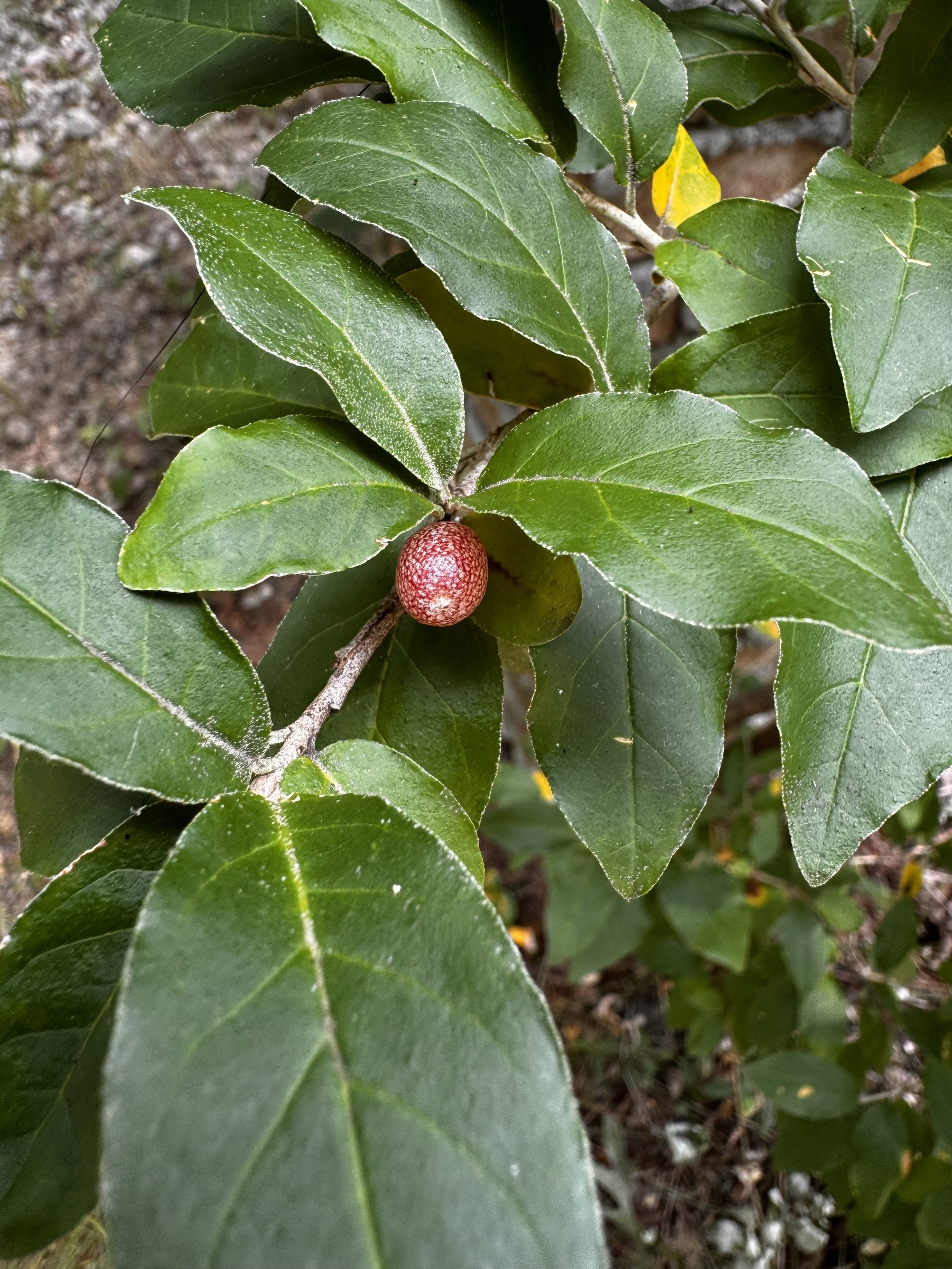Autumn Olive: From Land Management Gone Wrong to Tasty Forager’s Delight
Autumn olive (Elaeagnus umbellata) is near and dear to my heart. It’s plump red berries in winter and beautiful yellow blooms in spring… Yes, I love Autumn Olive even though it has a bad reputation.
I first learned about autumn olive in my wildlife habitat class while working towards my master’s in wildlife ecology. My professor noted that autumn olive is the “poster child” for wildlife biologists because it shows that we do not always get species management correct and that even scientists can fail.
Conservationists first introduced Autumn olive to the United States in the 1930s. They wanted to prevent soil erosion and provide food for wildlife. At the time conservations believed autumn olive was optimal for these desired outcomes. However, it rapidly spread and took over various ecosystems. Despite this, autumn olive was planted by conservationists for decades because of its inherent ability to prevent soil erosion and prolifically feed various wildlife. Today, it’s known as one of the most invasive species in many ecosystems, but surprisingly it still has unseen benefits.
It wasn’t until I enrolled in Matt Kip’s Wild Tuning foraging courses that I learned autumn olive was edible for humans too! In the Southeast, they produce little red edible berries that are a little sweet and tangy. And because it’s so invasive, it is a perfect plant to start your foraging adventures. You cannot pick too much of it and eating it may help prevent its invasive spread.
Autumn Olive Identification
Autumn olive is a shrubby, deciduous tree, native to Asia, that grows from 10-16 feet tall. Its leaves are a gorgeous sheen of silver (especially on its underside) that alternates on each branch. Its flowers are cream-colored with a wonderful honeysuckle-like aroma.
Fruits of the autumn olive are red, single-seeded, and silver-spotted. Fruits usually appear during the fall in more northern parts of the U.S. and appear during winter (and occasionally through summer) in the southern U.S.
Autumn Olive Harvest & Preparation
Once you have correct identification, it’s easy to pluck off the berries by hand. Be sure to bring a basket or bucket, as the berries can produce prolifically! Berries are ripe when they are red and plump.
You can eat the berries fresh or process them! Maria Noel Groves suggests tasking the fresh berries and running them through a food mill to create fruit leather. You can either process the berries fresh or freeze them for later use. Berries can also be juiced or processed as jams, jellies, and cordials.
Autumn Olive Medicinal Uses
Autumn olive is truly a superfood powerhouse due to its extremely high levels of antioxidants, specifically lycopene. Lycopene is anti-inflammatory, supports prostate health, and can be supportive through prostate and breast cancers. Autumn olive contains more lycopene than tomatoes, roughly 15 times more than raw tomatoes. The berries are energetically astringent and toning while also drying and warming. Spiritually, autumn olive flower essence can help people move through transitional phases of life including a new move or menopause.
Cautions and Contraindications
Due to its extremely invasive nature, do not intentionally plant autumn olive, rather, forage it! There are no known contraindications, but it doesn’t mean that autumn olive will be right for you. Stop eating immediately if you show any signs of an allergic reaction.
Autumn Olive Ecology & Habitat
Autumn olive can be found in disturbed soil, full sun to partial shade, and forest edges. Autumn olive was introduced to the United States in about 1930 from Asia. It was planted in the U.S. by the Soil Conservation Service because it helps to stabilize eroding soils, fixes nitrogen into the soil, provides food for wildlife, and serves as a windbreak.
But very rapidly, autumn olive began to spread and take over various ecosystems and is now known as one of the most invasive species in the eastern U.S. More research is needed to fully understand autumn olive’s effects on ecosystems but we do know that it is damaging ecosystems by outcompeting native plants. Thus, this makes it a perfect candidate for foraging!
Summary of Autumn Olive
Although it is easy to get fixated on the many issues autumn olive causes, it was originally planted for its benefits. Autumn olive forms a symbiotic relationship with soil bacteria to fix nitrogen. This process is crucial because many plants cannot absorb nitrogen directly from the air. Autumn olive helps by converting nitrogen into a form other plants can use, enriching the soil and promoting healthier plant growth. However, due to its invasive nature, it’s best not to plant or encourage them to grow. Harvest the berries as much as you would like and discard their seeds in the trash after eating. Happy foraging!
Sources
Allan, P. F. and W. W. Steiner. 1972. Autumn Olive: For Wildlife and Other Conservation Uses. Leaflet 458:4-7. Indiana University, Bloomington, IN, USA. Ebinger, J. and L. Lebnen. 1981. Naturalized Autumn Olive in Illinois. Transactions of the Illinois State Academy of Science 74:83-85. Thayer, S. 2023. Sam Thayer’s Field Guide to Wild Plants of Eastern and Central North America. Weyerhaeuser, WI. Forager’s Harvest Press. The Nature Conservancy. 2020. Autumn Olive: Your Invasive, Seedy Neighbor. <https://www.nature.org/en-us/about-us/where-we-work/united-states/indiana/stories-in-indiana/autumn-olive/>. Accessed 26 June 2024. United States Forest Service [USFS]. 2024. Species: Elaeagnus umbellata. <https://www.fs.usda.gov/database/feis/plants/shrub/elaumb/all.html>. Accessed 9 July 2024. Wintergreen Botanicals. 2024. Meet the Plants. <https://wintergreenbotanicals.com/virtualherbwalk/spring/#autumnolive>. Accessed 1 July 2024.Note: Information here is not intended to be medical advice, rather it is educational information. Please be sure to contact a licensed medical professional before consuming any plants. This information is not intended to diagnose, treat, prevent, or cure any illness. The information in this blog has not been evaluated by the FDA and the use of any of this information

